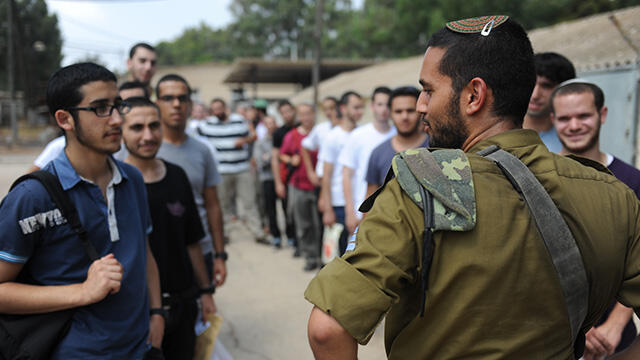Getting your Trinity Audio player ready...
A worrying new trend in the IDF points to a decline in motivation to serve in combat roles, with new recruits preferring cyber defense to flight course.
Data from July, the IDF's large combat recruitment cycle, shows 67 percent of recruits sought to enlist in combat roles in 2017, compared to 68.8 percent in 2016.
For the IDF, this is the lowest rate in a decade. The last time such low motivation was recorded was immediately after the 2006 Second Lebanon War.
The highest motivation rate in the last decade was recorded in 2010, when 80 percent of new recruits joined combat units, and the numbers have been consistently dropping since.
Data from the Manpower Directorate shows the problem has been ongoing for three concurrent recruitment cycles: In March 2017, only 71.5 percent sought to enlist in combat roles compared to 72.5 percent the previous March. In November 2016, meanwhile, the rate was 69 percent, compared to 71 percent the previous year.
Senior IDF officials rejected claims the Elor Azaria case had any impact on motivation to serve in combat roles, saying the issue did not come up in questionnaires or studies conducted since. Furthermore, demand to serve in the Kfir Brigade, where Azaria served, has reached new heights, as has the demand to serve in the Border Police.
According to the IDF, the drop in motivation to serve in combat roles is the result of social changes in Israel. Primarily: the erosion of the warrior ethos.
At the same time, there is also a clear preference emerging among new recruits, and particularly their parents, to join the technological units, such as the Military Intelligence Directorate's Unit 8200, cyber defense units, and other units in the Computer Service Directorate. This trend has been gradually increasing over the past five years.
An analysis of recruitment trends shows more and more soldiers want to have a meaningful service closer to home, which could also give them an advantage later in life. Serving in the technological units can undoubtedly meet those desires.
3 View gallery


New recruits at the IDF induction center (Photo: IDF Spokesman's Office)
(צילום: דובר צה"ל)
Another reason for a drop in motivation to serve in combat roles is an exodus of new recruits to "infantry lite" units, such as the mixed-gender battalions, and professions considered less demanding, such as aerial defense (for example, serving at an Iron Dome battery) and the Home Front Command.
The IDF, which is aware of the problem, is working to changing the trends. IDF Chief of Staff Gadi Eisenkot has approved principles for a work plan meant to bolster the combat soldier's standing. The plan will give significant preference to combat soldiers both in recognition and in benefits. This in addition to other steps taken in favor of combat troops in recent years, such as raising their pay to some NIS 1,620 (about $450) a month, giving them cards with benefits, and funding a bachelor's degree for every combat soldier.
It's important to note that despite the drop in motivation to serve in combat roles, the IDF was able to fill the ranks in the latest recruitment cycle, even in less popular units such as in the Armored Corps and the Artillery Corps, thanks to advance work by the commanders.



